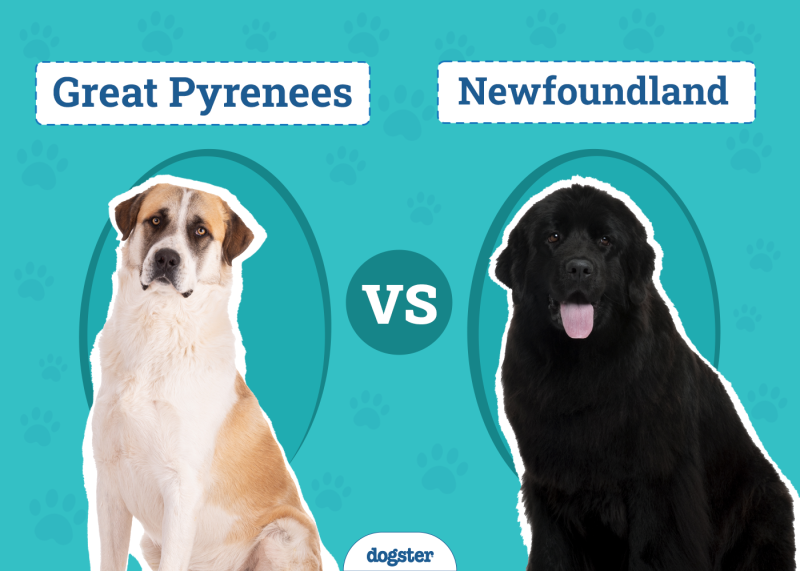In this article
View 2 More +When humans are sad, they sometimes cry salty tears, but have you ever wondered if dogs cry? You may have heard your dog whine or exhibit a sad human-like expression, but dogs aren’t thought to cry tears like we do. They do have tears and tear ducts, but these typically serve a purely practical purpose. However, it has been found that tear production in dogs increases when they are experiencing certain emotions. Read on to find out more.

Do Dogs Ever Cry Tears?
A study from 2022 showed that dogs do experience an increase in tear production when confronted with emotional events such as being reunited with their owner.1 These dogs also showed higher levels of the hormone oxytocin, suggesting that it may play a role in tear production.
But just because a dog produces more tears in response to an emotion that doesn’t mean that they cry in the way we do. There is no sobbing, body racking, or other things that we think of when crying. Dogs may whine or whimper, but that’s typically about as close as it comes.
Now, if it appears that your dog is crying tears, it is possible that it is a watery discharge due to an eye infection or debris in the eye. For dogs, tears are more often a biological function that keeps the eye lubricated and clean. If your dog looks like they’re crying tears, has red eyes, or paws at their face, we recommend taking them to the vet to identify the cause.
If you need to speak with a vet but can't get to one, head over to PangoVet. It's our online service where you can talk to a vet online and get the advice you need for your pet — all at an affordable price!
Do Dogs Have Emotions?
It’s obvious to any dog owner out there that dogs do have emotions. It’s just that the emotions of canines are more simplistic and, well, more dog-like than ours. Research suggests that the cognitive, mental, and emotional intelligence of a dog is roughly similar to that of a human toddler and that dogs also experience a broad range of emotions.2 Happiness, sadness, fear, anger, and love are the most notable emotions that dogs can feel like we do, but in their own way.
Since dogs can’t talk, they convey their emotional state through body language. You probably already know some of the quirky things your dog does when they’re happy or upset, but in general, there are a lot of ways to get an idea of your dog’s mental state. Let’s talk about sadness and happiness specifically, since they’re most associated with crying.

How Does a Dog Express Sadness?
Your dog doesn’t listen to sad music when they’re feeling blue, but it’s easy to see the signs if you pay close attention. Some of these signs are more obvious, while others are more subtle.
- Lack of energy or fatigue
- Withdrawal away from the family
- Sleeping more or less
- Loss of appetite
- Lack of interest
- Vocalizations like whining or howling
- Excessive licking or self-grooming
How Does a Dog Express Happiness?
Most dog parents are familiar with the sight of a happy dog. While it seems obvious when your dog is wagging their tail, there are other specific body language indicators you can pick up on. Dogs are social and enjoy when you’re emotionally on the same page that they are.
- Wagging tail
- Playfulness
- Play “bow” with lowered front legs
- Open, alert, or “bright” eyes
- Open, relaxed mouth
- Exuberant running
- Affectionate gestures
- Healthy appetite
Do Dogs Understand Human Emotions?
Dogs are highly empathetic creatures that have evolved alongside humans for thousands of years, so it only stands to reason that they’ve learned about us. Can dogs understand human emotions?
Yes, dogs can understand human emotions to a limited degree, but they likely don’t grasp their full complexity. For instance, your dog can tell when you’re feeling down or sad, but they may not know the cause of your woes. They pick up on subtle cues like despondence, the tone of your voice, and your other body language.
On the flip side of that coin, your dog can also recognize when you’re happy and relaxed by various body language cues. A cheerful, bubbly voice is way different than a sad monotone, for example. Your dog knows just when it is time for playtime by the familiar gestures you perform on a daily basis, and to a degree, they learn your routine. Dogs are attuned to us on a mental and emotional level, so it pays off as a pet parent to learn about and promote that unique connection.


Final Thoughts
It appears that dogs cry tears similar to the way we do—to a point. But rather than full-on crying, complete with sobs and body racking, it has been found that tear production simply increases when a dog is experiencing certain emotions. More than crying, dogs tend to express their emotions through their body language, be it whining, sleeping a lot more or less, eating less, and appearing disinterested in their environment.
Learning about the way your dog communicates, even unconsciously, will help you become more in tune with their emotions and how to cheer them up when they’re sad.
- See also: Dog Eye Discharge
Featured Image Credit: Jaromir Chalabala, Shutterstock


















